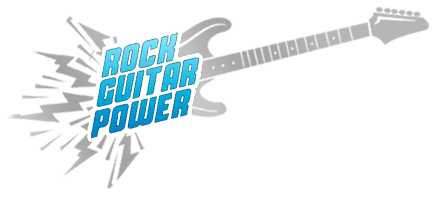How To Choose The Right Amp For Your Electric Guitar
Students who are just starting to learn guitar often ask me “What is a good guitar amp to buy”? This usually comes right after the initial question of “what is a good guitar to buy”? My answer to the second question is much simpler than the first. I always tell people to buy the guitar that inspires them the most that is within their price range. When it comes to amps however, you should put a little more thought into deciding what is right for you. Hopefully the rest of this article will give you some insight on how to make a wise buying decision.
First of all, when it comes time to buy a guitar amplifier we are going to focus on what you need for an Electric Guitar. You can certainly buy an amp that is made for an acoustic guitar, but were not going to be talking about that here. There is a huge market out there for amplifiers and you have tons of choices between brand names, what features the amp has, and of course how loud the thing can go. Here are some of the main features that you want to know about when looking for your first amp:
1. How many channels does it have?
You will find that most amps have a clean channel and a distortion channel. A clean channel is pretty self explanatory, a distortion channel is what is going to give you a hard rock tone that sounds good with power chords and when soloing. What you want to look out for here is that the two channels are completely separate with their own volume and tone controls. This will give you the ability to switch between them at will, preferably with a foot switch so that you can change channels on the fly.
2. How many speakers does it have and what sizes are they?
Most starter amps will have only one speaker in them. The most common sizes are 5”, 8”, 10” and 12”. You will most likely never find an amp with a speaker larger than 12” unless it is a bass or piano amp. When you need more power and volume you can get into an amp that has two speakers in it. These will most likely have two 12” speakers and all the volume and tone controls combined into one. If you are looking to start playing in a band or with a drummer, you should get into something with two 12”s. This will give you the volume that is needed to be heard over a drum kit that is rocking out at full volume. The extra speaker will also give you some extra thickness to your tone.
3. How many watts does it have and how powerful is it?
The amount of watts an amp has is what lets you know how powerful it is. Most beginner model amps will have lower ratings around 10 to 30 watts. Anything that is rated at 50 watts or higher is going to be plenty loud for you to play in a band with. You will usually see most amps max out at 100 watts. Although this is not that crucial of a factor when buying your first amp, you should still put it into consideration.
4. Does it have any on board effects?
Many amps these days are going digital and have their own built in effects. This is great because it will cut back on the number of effect pedals that you will want to buy after you have been playing for a bit. The most common types of effects to look for are: Chorus, Flange, Delay, and Reverb. Just about every amp you look at will have some type of Reverb in it. Chorus, Flange, and Delay are all effects that will enhance the original tone to give it more life and character. Delay is one of my favorites and a cool thing to look for is if the amp has a tap delay so that you can set the tempo of the delay itself.
5. Is it powered by Tubes or is it Solid State?
Most beginner and lower end amplifiers are solid state and that is probably the best way to start out. Tube amplifiers are almost always more expensive but for a good reason. They usually have a warmer, smoother tone as well as a more desirable natural distortion sound. One big downside of tube amps, depending on how you look at it, is that they really need to be turned up loud to get the full tone out of them. Solid-state amps sound pretty much the same at any level, which makes them great for practicing and low level playing. They can also sound awesome really loud so don’t think that just because tube amps are more expensive that you need to go straight for buying one.
Regardless of what you end up purchasing, make sure you do your homework before you spend your hard earned money. Go to a music store and try things out as much as you need to so that you are comfortable on your purchase. If you don’t know how to play yet, ask a sales person to jam out on some different amps while you play around with the settings to see what you like. Above all, shopping for a new amp should be a fun and exciting process.



thanks!
that was really helpful! looking forward to more tips from u guys!
cheers!
Great article for a complicated question. Tube amps sound much better but cost more and a real tube amp has both preamp and power amp tubes.
good,are u do cnc router for sale?